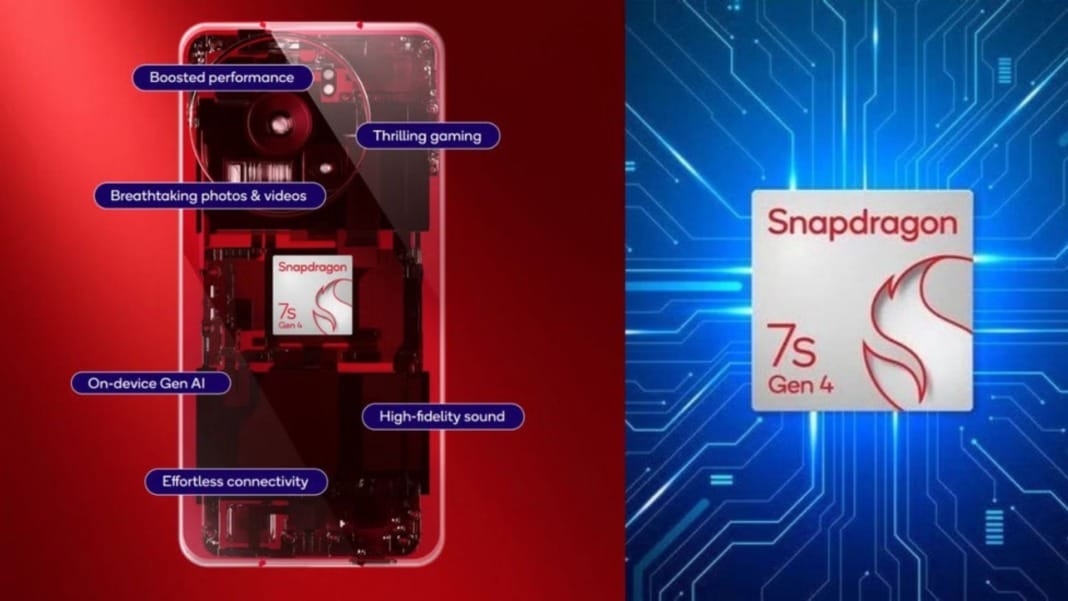Qualcomm has officially introduced the Snapdragon 7s Gen 4, the latest addition to its Snapdragon 7 series, almost a year after the launch of the Snapdragon 7s Gen 3. The new processor promises modest performance improvements while adding support for ultra-wide displays and enhanced AI capabilities.
Performance upgrades and architecture
The Snapdragon 7s Gen 4 retains the same 1+3+4 core structure as its predecessor but offers higher clock speeds. The Prime Cortex-A720 core now runs at 2.7GHz, compared to 2.5GHz in the Snapdragon 7s Gen 3. Alongside this, the updated Adreno GPU is expected to deliver improved gaming and graphics performance.
Qualcomm has stated that these upgrades provide a 7 per cent boost in both CPU power and graphics capabilities. While the increase is not dramatic, it represents a significant step forward for mid-range smartphones, aiming to deliver smoother performance and enhanced visual experiences.
Enhanced display, imaging and AI features
A major highlight of the Snapdragon 7s Gen 4 is its expanded support for displays. The chip can now handle ultra-wide resolutions of up to 1,300 x 2,900 pixels at refresh rates of 144Hz. This makes it particularly suited to devices with large, high-resolution screens, catering to users who prioritise sharp visuals and fluid motion.
The new Spectra image signal processor (ISP) also brings significant improvements in photography and video recording. It supports camera sensors up to 200 megapixels and can capture 4K HDR video. This allows smartphone manufacturers to integrate higher-end imaging features into devices powered by the chip.
Artificial intelligence performance has also been improved through an updated Hexagon NPU. It now supports models such as Llama 1B and Qwen 1B, alongside real-time translation features. These upgrades are expected to benefit a wide range of applications, from on-device AI assistants to advanced photo editing tools.
Connectivity, storage and availability
In terms of connectivity, the Snapdragon 7s Gen 4 offers broad support for 5G networks, including both mmWave and sub-6 GHz bands, with compatibility for both standalone and non-standalone modes. It also supports Wi-Fi 6E and Bluetooth 5.4, ensuring reliable wireless connections across devices.
The processor is compatible with LPDDR5 RAM running at 3,200 MHz and UFS 3.1 storage, allowing for faster memory and data access. For charging, it features Qualcomm’s Quick Charge 4+ technology, which enables shorter charging times for smartphones.
Although Qualcomm has not revealed an exact launch date, the Snapdragon 7s Gen 4 is expected to power new Android smartphones later this year. The chip is likely to appeal to handset makers looking to balance cost, performance and premium features for mid-range devices.




